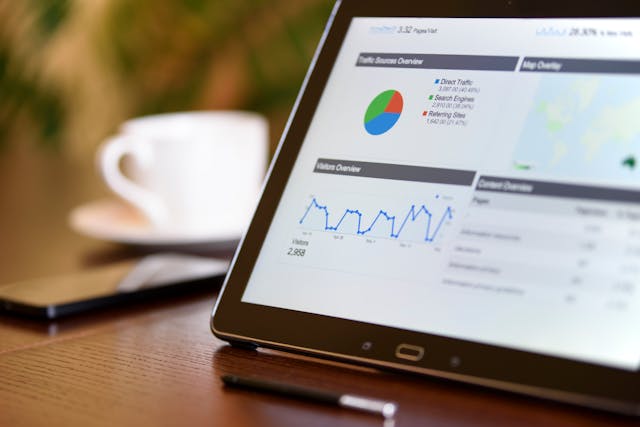Meeting the sudden and specific reporting needs of your clients is often a defining moment for any agency. Those requests rarely arrive at a convenient time. They usually emerge as urgent demands—like a client wanting a detailed breakdown of campaign performance just before their board meeting or a prospective partner needing proof of ROI metrics within hours. The ability to craft a relevant ad hoc report, quickly and accurately, can transform the way clients perceive your reliability and expertise.
Ad hoc reporting doesn’t have to be an overwhelming scramble. It’s an opportunity to showcase your agency’s agility and depth. Let’s walk through how to prepare a sample that serves as a flexible template for these situations, so you’re ready to deliver with speed and confidence.
Starting With the End in Mind
Every ad hoc report begins with a clear understanding of its purpose. The goal isn’t to showcase everything you can do; it’s to zero in on what the client needs to see. Take a moment to think about why the request came in. Was it prompted by a KPI the client is struggling to grasp? Are they answering to stakeholders who need results framed in specific ways?

An effective report addresses those needs without adding unnecessary clutter. For example, if a client wants to understand their paid media campaign’s performance, your report doesn’t need organic traffic trends unless they connect directly to ad conversions. Focus sharpens your efforts, keeps the data lean, and respects your client’s time.
Building the Right Structure
Structure becomes your ally when time is tight. A well-organized ad hoc report makes information digestible and actionable. Consider dividing your sample into sections that prioritize clarity over complexity.
Start with a headline metric or key takeaway. Let’s say the request involves campaign performance; your opening should tell the client whether the campaign is meeting its goal. Did the paid ads generate the expected leads or sales?
Provide a breakdown that supports the headline. Numbers without context are noise. When you show impressions, clicks, and conversion rates, include benchmarks or comparisons to previous campaigns to help the client understand the significance of the figures.
Add supporting visuals that simplify complex data. Charts and graphs aren’t just filler; they’re a bridge for clients who might not be immersed in marketing lingo. A simple bar graph showing ROI or a line chart illustrating traffic trends over time can speak volumes without requiring explanation.
Conclude with recommendations or next steps. Reports become more valuable when paired with clear, actionable advice. Suggest what the client should focus on based on the data. If you’re addressing weak conversion rates, recommend A/B testing or adjustments to ad copy.
Choosing Tools That Simplify the Process
Speed is often the defining factor in ad hoc reporting, so familiarity with the right tools is essential. Excel and Google Sheets remain reliable choices for raw data manipulation, while platforms like Tableau or Google Data Studio allow you to present insights visually.
Leverage automation where possible. For instance, many CRM platforms and analytics tools have built-in reporting features you can customize to suit specific requests. Spend time exploring these capabilities before the pressure is on, and create saved templates for common scenarios.
A well-prepared sample report can save you significant time when clients need something urgently. Imagine having a reusable Google Data Studio dashboard tailored for campaign reporting. When a client makes an ad hoc request, all you need to do is update the data source, tweak the date range, and add any specific commentary.
Emphasizing Visuals That Communicate Quickly
Numbers on their own can overwhelm even the savviest clients. A great ad hoc report prioritizes visuals that tell a story. When designing your sample, focus on elements like:
Trends: Use line graphs to display changes over time, such as fluctuations in click-through rates or revenue growth from campaigns.
Comparisons: Bar charts make it easy to compare performance metrics across different campaigns or time periods.
Ratios and proportions: Pie charts work well for showing the distribution of ad spend across platforms or the percentage of traffic coming from different sources.
Keep your design clean. Too many colors or overly complex graphs distract rather than inform. Stick to branding-friendly color schemes and avoid adding unnecessary embellishments.
Crafting Commentary That Adds Value
Clients rely on agencies not just for raw data but for the ability to interpret what it means. Your commentary is the thread that ties the report together. Avoid jargon and focus on clarity. Imagine your reader is a stakeholder outside the marketing world—how would you explain these results to someone unfamiliar with the finer points of your craft?
Instead of saying, “The CTR for the campaign was 1.8%, which is below the average for this industry,” try framing it as, “The click-through rate came in at 1.8%, which suggests that adjustments to ad copy or targeting may be needed to improve engagement.”
If you identify strong performance, highlight what contributed to it. A spike in conversions could stem from a specific offer, targeting strategy, or timing. This level of commentary not only answers your client’s immediate questions but also reinforces your value as a strategic partner.
Preparing for Common Scenarios
Ad hoc requests tend to fall into recurring themes. Campaign performance, budget allocation, lead quality, and ROI breakdowns are frequent topics. Use these patterns to your advantage by creating baseline templates that address these themes.
Think about what your client would expect in a report about a Facebook Ads campaign, for instance. Your sample might include metrics like impressions, reach, clicks, CTR, conversions, and cost-per-conversion. Add pre-written sections that explain each metric’s importance, so you’re not starting from scratch under pressure.
Keep these templates simple but flexible. While they provide a starting point, they should allow room for customization. Each client has unique needs, and the ability to tailor your reports quickly ensures you’re always delivering relevant information.
Staying Ready for the Unexpected
Preparation makes all the difference when urgency strikes. Beyond having a strong sample report, make sure your team understands how to handle sudden requests. Establish processes for accessing and analyzing data quickly. Train your staff to work efficiently with reporting tools and ensure key team members are available to review the finished report before it goes out.

Anticipation sets great agencies apart. The more you practice creating ad hoc reports and refining your sample templates, the more confident you’ll feel when those requests inevitably land in your inbox.
Conclusion
Ad hoc reporting is as much about preparation as it is about execution. A well-crafted sample report becomes your secret weapon in delivering client-ready insights on demand. Use it as a foundation, and you’ll find that even the most urgent requests become manageable opportunities to demonstrate your agency’s expertise.
When you approach these challenges with a plan in place, clients notice. They’ll see an agency that not only responds to their needs but consistently delivers value, even under tight deadlines. That’s the kind of impression that wins long-term loyalty.